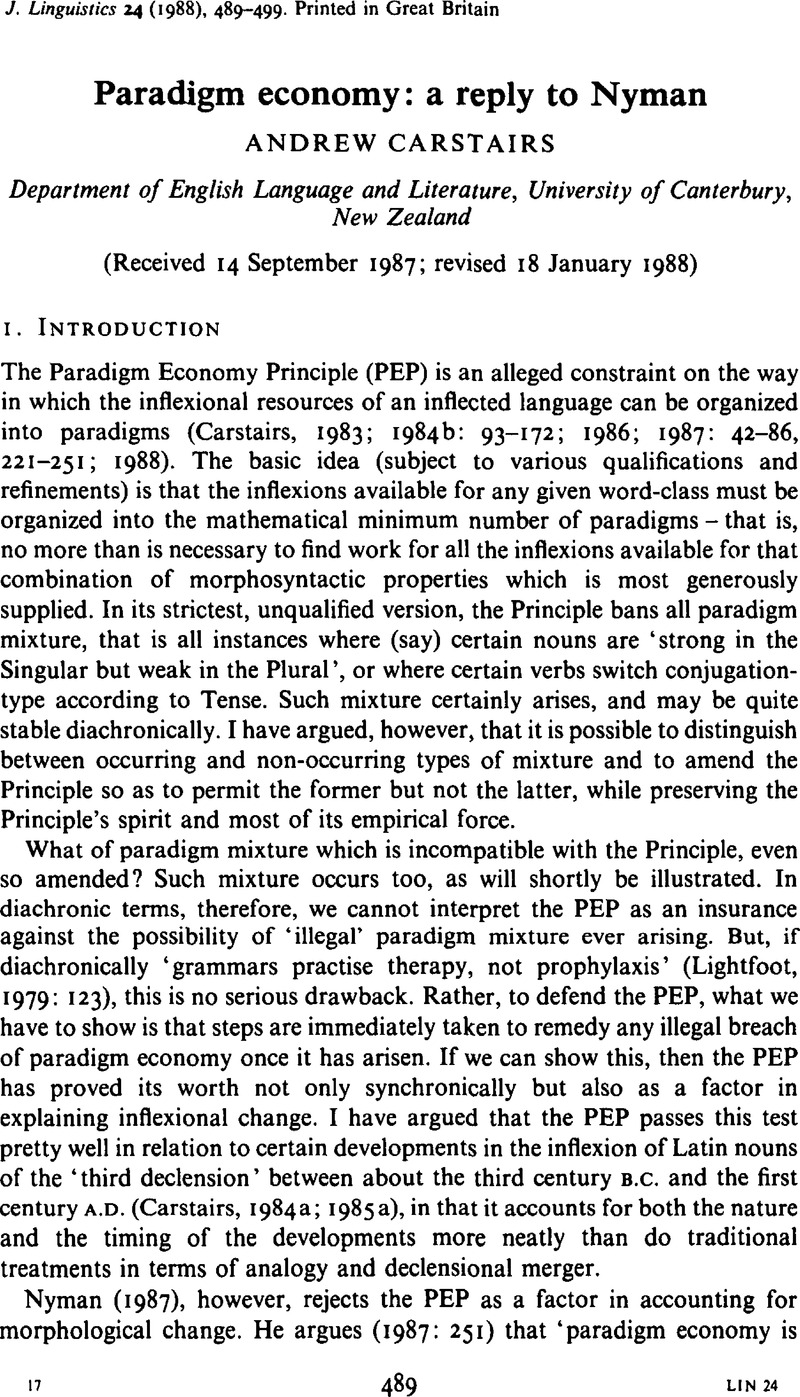Crossref Citations
This article has been cited by the following publications. This list is generated based on data provided by Crossref.
Nyman, Martti
1988.
Paradigm economy: a rejoinder to Carstairs.
Journal of Linguistics,
Vol. 24,
Issue. 2,
p.
501.
Jensen, John T.
1989.
Andrew Carstairs, Allomorphy in inflexion. London: Croom Helm, 1987. Pp. xvi + 271..
Journal of Linguistics,
Vol. 25,
Issue. 1,
p.
235.





